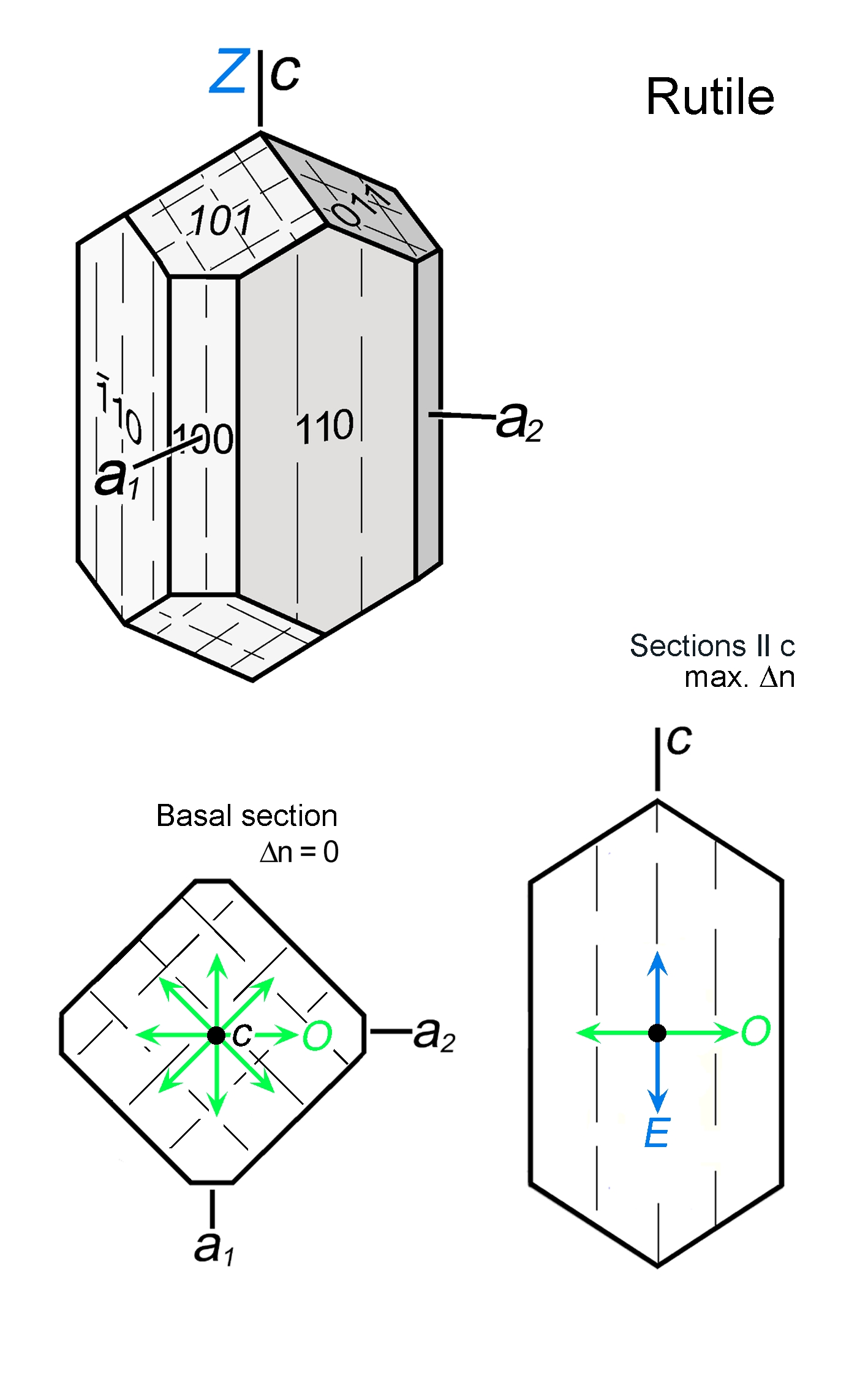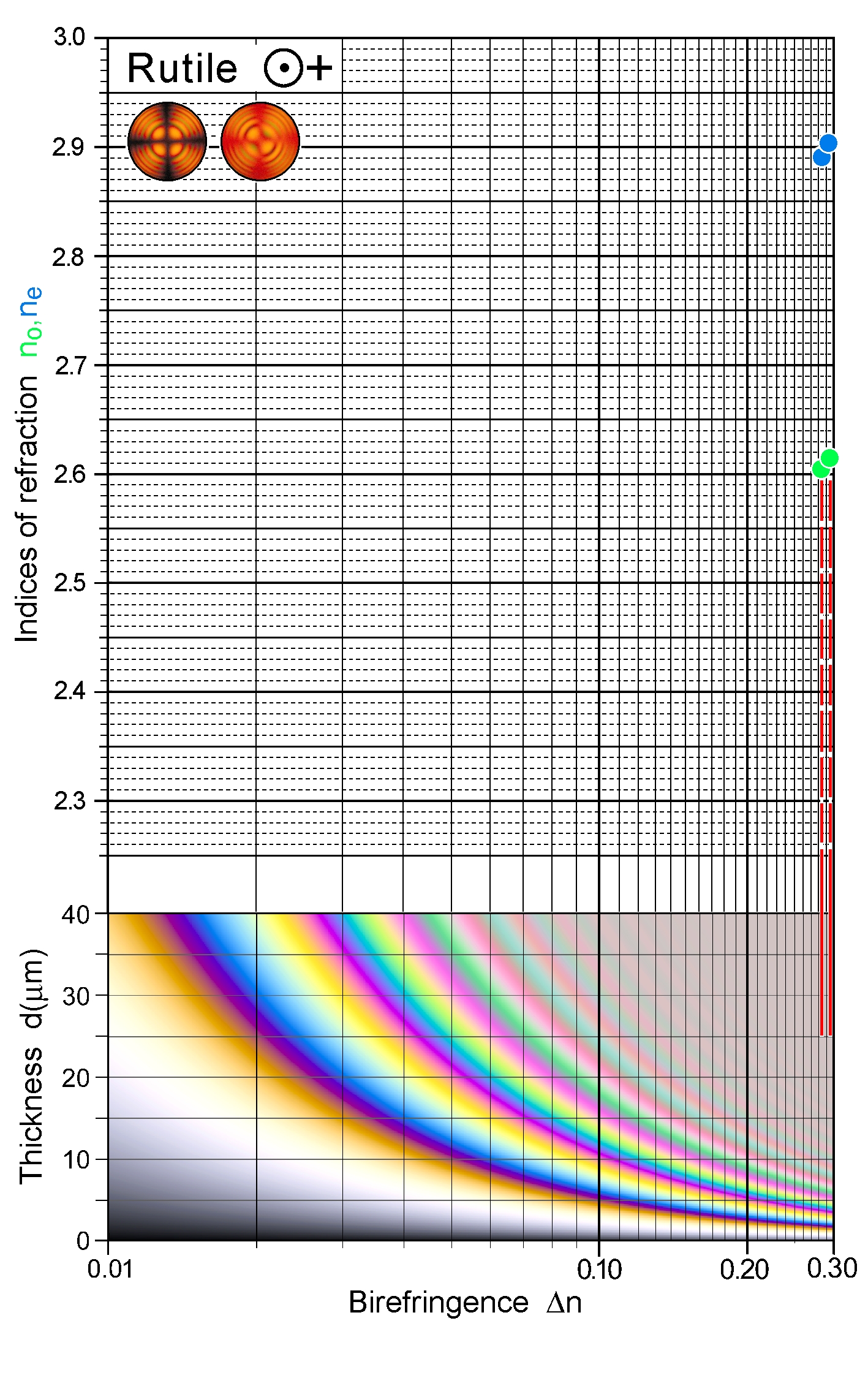|
| Formula | TiO2 |
| | Optic class & sign | Uniaxial positive |
| | Relief | Extreme |
| | Refractive indices | no = 2.605 -2.616
|
|
ne = 2.890 -2.903
|
|
| |
| | Birefringence (max.) | 0.285 - 0.296 |
| | | High-order white interference colours, commonly completely masked by mineral colour |
| | Sign of elongation | Length-slow, l (+); difficult to determine due to extreme Δn |
| | Interference figure | Isochromes over multiple interference colour orders, mineral colour tends to mask the interference colours, particularly the higher-order ones; may be anomalously biaxial with 2V up to 10° |
| | Colour / pleochroism | Deep red-brown to near opaque, yellow-brown, purple; weak pleochroism E>O |
| | Zoning | |
|
|
| Form | Habit | Granular, elongate-prismatic to acicular |
| | | Surface | Euhedral (elongate crystals in particular) to anhedral |
| | Cleavage | 2 sets {110}, distinct, {100} fair |
| | Twinning | Simple contact twins ("knee twins") on {110}, also cyclic or lamellar; glide twins on {092} |
| | Extinction | Straight to prism faces in sections ∥ c; elongate crystals precipitated from high-temperature minerals may have their long axis parallel to c, or at a high angle to c, i.e., extinction would be inclined in the latter case |
|
|
| Reaction textures | Cooling-related precipitation of acicular rutile in high-temperature Ti-bearing quartz and other minerals |
| | Alteration / decomposition | Very stable; rare alteration to leucoxene or anatase |
|
|
| Occurence | Ign | Hornblende-rich igneous rocks, anorthosite, pegmatite |
| | | Met | Metapelites and metapsammites, marble, granulites, eclogites |
| | | Sed | Detrital in sedimentary rocks and unconsolidated sediments, in particular sands (heavy mineral fraction) |
| | | Hyd | Quartz veins |
| | | Other | |
|
|
| Distinctive properties | Extreme relief and birefringence, colour |
| | Additional comments | Commonly present in accessory amounts only |
|
|

 Images
Images 


 Images
Images 
